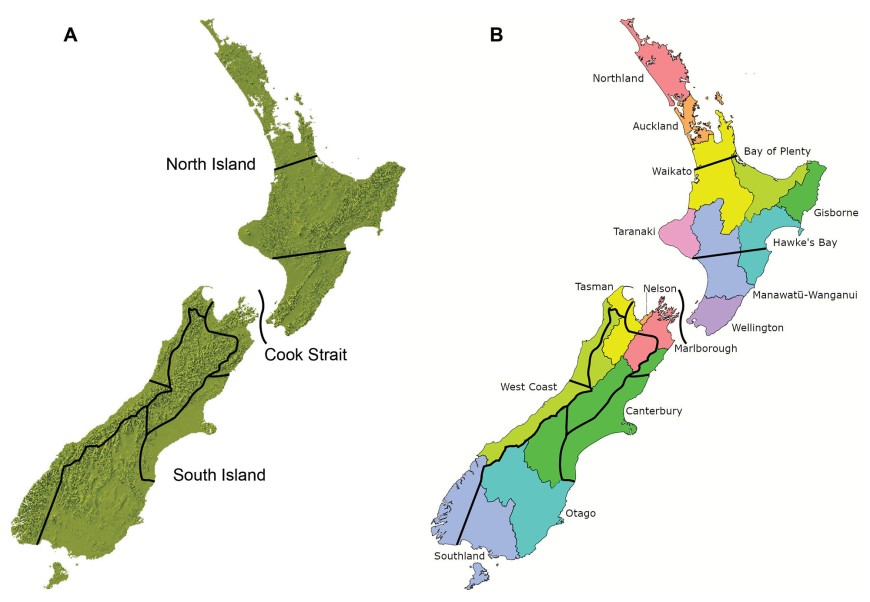Now, researchers at Manaaki Whenua and the University of Otago say it’s time to relax these strict guidelines if we want to build resilience into our changing environments. Instead, the researchers suggest creating nine broad ecosourcing regions, within each of which it is permissible to use seeds. They believe this will lead to improved restoration outcomes by increasing species and genetic diversity, mitigating the negative effects of inbreeding, and facilitating the genetic rescue of threatened species populations.

Nine proposed eco-evolutionary regions for ecosourcing. A, Ecosourcing regions overlaid onto New Zealand topographic map. B, Ecosourcing regions overlaid onto Regional Council regions.
The concept of ecosourcing was introduced by Eric Godley in 1972 to address concerns about planting species outside their natural geographical range and into remnants of indigenous vegetation, which could disrupt their evolutionary trajectories. This would lead to unsuccessful restoration outcomes due to poor environmental matches. “However, we believe that this approach has become overly restrictive,” says Manaaki Whenua’s Dr Peter Heenan. “Ecosourcing at a strictly local scale limits genetic diversity, confines species to their historical ranges, and reduces conservation options for threatened species,” he says.
For instance, tree species in Aotearoa New Zealand that are commonly used in restoration projects have low genetic differentiation within populations because they readily interbreed throughout their range. The strict ecosourcing of tree seeds provides limited benefits. The researchers use the example of kānuka (Kunzea ericoides), previously thought to comprise several different species. Research by Peter and colleagues has revealed that kānuka shows geographical variation across Aotearoa New Zealand but no fine-scaled genetic variation.
Peter says it would be better to use larger ecosource areas instead of smaller ones, to help avoid problems associated with inbreeding and allow for a better match with a local environment. “To effectively protect and restore ecosystems, conservation efforts need to adapt to these changes in contemporary biotic landscapes that have been profoundly altered by climate change, habitat loss and fragmentation, species extinctions, the spread of invasive species, and the emergence of novel habitats,” he says.
There has been considerable interest from regional councils, DOC, and community groups in how the new recommendations for enlarged seed-collecting zones can be applied to seed collection for future restoration projects.

